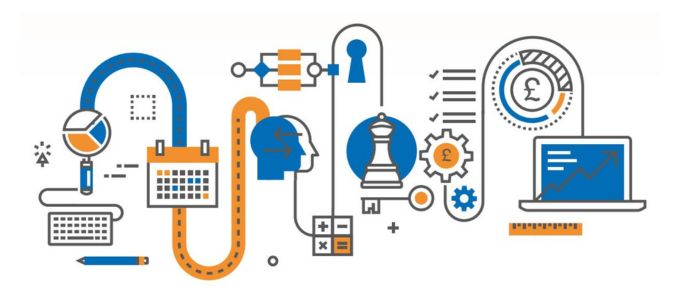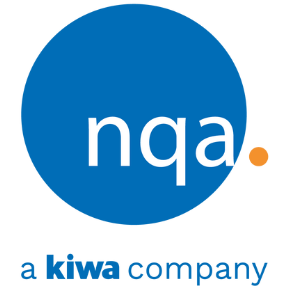A Guide to Implementing ISO 50001
ISO 50001:2018 is a pivotal international standard aimed at improving Energy Management Systems (EnMS) within various organisations and industries, fostering strengthened energy efficiency worldwide.
When incorporated into organisational processes, this standard seeks to optimise energy use and boost sustainability. It offers a structured approach for cultivating an energy-conscious culture, promoting resource conservation, and securing organisational commitment through policy frameworks, systematic audits, and continuous improvement efforts.
In the following sections, we will explore the crucial elements of the ISO 50001 Implementation Guide provided by NQA and highlight its fundamental aspects to support you in attaining certification.
Why ISO 50001 matters
Achieving ISO 50001 certification is vital for organisations aiming to enhance their energy efficiency, reduce operational costs, and minimise environmental impact. It demonstrates a commitment to sustainable energy practices, which can improve an organisation's reputation and competitiveness in the market. Additionally, ISO 50001 helps companies comply with regulatory requirements and achieve long-term energy and cost savings, contributing to overall sustainability goals and social responsibility initiatives.
A brief history of ISO 50001
Introduced by the International Organisation for Standardisation (ISO) in June 2011, ISO 50001 was created to assist organisations in managing and improving their energy performance. This standard emerged from the need for sustainable energy practices in response to rising global energy demands and climate change concerns. It built upon existing national and regional standards, particularly drawing from the European standard EN 16001.
Benefits of implementing ISO 50001
ISO 50001 is highly beneficial as it enables organisations to systematically improve their energy performance and achieve significant cost savings.
Its advantages include:
-
Reduced energy costs: substantial savings on energy bills through improved efficiency.
-
Enhanced energy efficiency: a structured approach to optimising energy use.
-
Lower greenhouse gas emissions: helps reduce carbon footprint.
-
Compliance with regulations: helps meet legal and regulatory requirements related to energy use.
-
Improved reputation: demonstrating a commitment to sustainability has a significant impact on organisation’s reputation.
-
Competitive advantage: leads to operational improvements and a stronger market position.
What’s inside the ISO 50001 Implementation Guide
The PDF guide for implementing ISO 50001 is vital for organisations seeking certification. Here's an overview of its key sections:
Annex SL
Annex SL, introduced by ISO, provides a universal high-level structure, identical core text, and common terms and definitions for all management system standards, simplifying the integration of multiple standards within an organisation. This structure is beneficial for creating an Integrated Management System (IMS) that simultaneously meets the requirements of ISO 9001, ISO 14001, and ISO 50001, among others. By aligning the processes for document control, internal audits, nonconformities, corrective actions, and management reviews, Annex SL eliminates duplication and streamlines compliance efforts.
Key components of Annex SL include:
-
Scope: defines the standard's applicability.
-
Normative references: lists referenced documents.
-
Terms and definitions: provides essential terminology.
-
Context of the organisation: understanding internal and external issues.
-
Leadership: roles and responsibilities of top management.
-
Planning: addressing risks and opportunities.
-
Support: resource management and competence.
-
Operation: process management and controls.
-
Performance evaluation: monitoring, measurement, and analysis.
-
Improvement: continuous improvement actions.
PDCA Cycle
Plan-Do-Check-Act (PDCA) is a four-stage iterative process aimed at achieving continual improvement. It involves systematically testing potential solutions, evaluating the results, and implementing those that prove effective. Central to this approach is strong leadership, especially from top management, which is crucial for successfully operating an Energy Management System (EnMS) and achieving the desired performance levels and continuous improvement
See the PDCA model here:
Risk– based and process-based thinking / audits
Risk-based thinking in ISO 50001 involves identifying and managing risks and opportunities that affect energy performance, starting with understanding the organisation's context and external influences like energy supply security.
Process-based thinking optimises interconnected activities within the EnMS by understanding energy consumption across organisational processes, identifying significant energy uses, and monitoring performance through data analysis.
Audits play a critical role in validating risk management and process optimisation efforts, identifying areas for improvement, ensuring compliance, and supporting informed decision-making.
Developing a thorough risk assessment framework effectively prioritises resources and minimises disruptions to energy management. This framework is crucial as it not only identifies risks but also informs the development of treatment plans to mitigate those risks. Both the risk assessment and treatment plan are vital components in ensuring proactive management of energy-related challenges
In ISO 50001, effective process management ensures skilled personnel oversee energy tasks, with audits confirming EnMS effectiveness and promoting ongoing progress. Processes in ISO 50001 convert inputs into outputs through sequential steps aimed at achieving defined goals, emphasising their interdependence and potential for performance improvement. Understanding these connections allows organisations to optimise operations and achieve better outcomes.
For further insights into these concepts, audits and processes, view the complete Implementation Guide.

Get the most out of your management systems
This section of the guide offers key tips for maximising your EnMS. The practices outlined in this section are crucial for organisations aiming to optimise energy management and achieve sustainable operational excellence. See some examples below and consult the complete Implementation Guide for more.
Next steps once implemented
The implementation of the standard is just the beginning of a continuous improvement journey. This section advises on essential additional steps to solidify the EnMS, such as conducting an internal gap analysis, organising a management system review meeting, and completing final stage corrective actions. These steps culminate in the final certification audit, ensuring that the EnMS meets all requirements and is effectively contributing to improved energy performance and organisational efficiency.
NQAs Final Thoughts
Our guide is an essential tool for achieving certification. It provides practical insights and systematic steps to effectively implement and maintain an EnMS. Whether you're beginning your journey or looking to optimise existing practices, our guide equips you with the knowledge and strategies needed to navigate the complexities of energy management.
Download the full ISO 27001:2022 Implementation Guide here.
![]() Looking to expand your understanding of ISO 50001? Explore our latest training!
Looking to expand your understanding of ISO 50001? Explore our latest training!
![]() Confident in ISO 50001? Contact our friendly sales team to discuss how we can support you.
Confident in ISO 50001? Contact our friendly sales team to discuss how we can support you.

